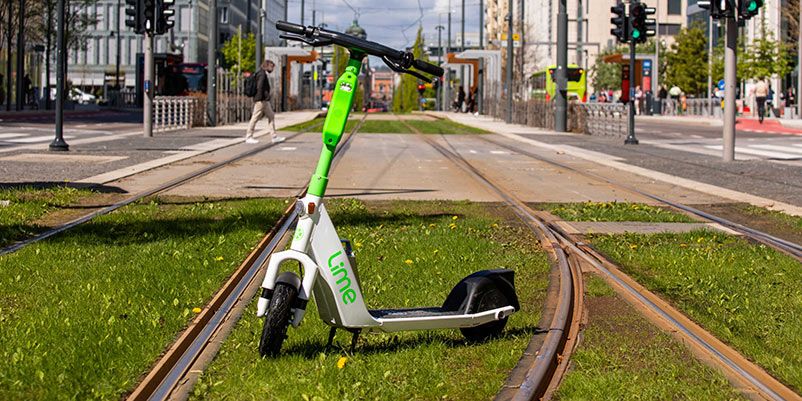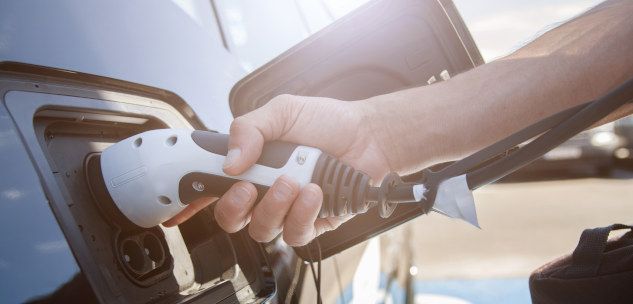Mobility Trends
Electromobility, Mobility as a Service, Autonomous Driving: Where is the journey heading? Where are we still at the beginning? Or rather, where do we really stand? We would like to give you a brief insight into which way mobility trends are heading for us and how SWARCO can pave the way for intelligent mobility solutions.
There are many new trends and challenges coming our way in the transport sector. Understanding and adapting the requirements for all means of transport and their users is key to meeting the needs of tomorrow's society and economy. Urban mobility innovation must take into account all aspects of societal change and the trends that accompany it; and in addition to conventional transport provision, the provision of new urban mobility services. For example, socio-cultural issues such as gender equality will have an impact on future mobility. As will digitalisation, sharing economy, automation, sustainability - especially in issues of CO2 reduction and air quality - or urbanisation. These are some of the trends that will revolutionize mobility, create new expectations regarding the transport of people and goods, and subsequently drive mobility towards a new era.
What is picking up speed?
Mobility trends in detail
1
Multimodal mobility
Cars have shaped the face of our cities. And they have done so for more than 100 years. The car became a symbol of wealth, freedom and changed the way we travel. However, unfortunately, we also had to get used to traffic jams, air pollution, noise and car accidents...
For a long time, traffic management only focused on improving the driving experience itself. At the same time, public transport, cyclists and even pedestrians were subordinate to cars. But this has changed in recent years - a development that is rapidly gaining momentum in 2021 due to the trend towards more liveable, sustainable and smarter cities. Showcases of this are cities like Amsterdam, which is a pioneer in micromobility due to its long cycling tradition.

2
MaaS
Mobility as a Service
Closely related to multimodal mobility is MaaS - Mobility as a Service. In many cities, travel information is available for different modes of transport. MaaS aims to provide a single ticket or application - e.g. a smartphone app - to make as many modes of transport as possible accessible and interconnected. This includes public transport, car or bike sharing, taxis, scooters and much more.
Often, however, this information - and the underlying services - are not connected, or when this happens is usually on a local basis. Changing between modes of transport is correspondingly inconvenient. Some cities, however, have already found ways to provide a single ticket for a large number of transport modes. They have proven that MaaS can be a more sustainable and attractive alternative to cars! Efforts to deploy MaaS on a larger scale beyond local solutions are supported by the European Union, for example.
A number of projects are looking at the use of MaaS and will make this topic even more relevant in 2021. Traffic management plays a huge role here, in guaranteeing the quality of service and ensure an equilibrium between the individual traveler’s objectives and community objectives.
3
E-mobility
While Norway, for example, already has a very high share of electric cars - in 2019, for example, it was already 55.9 % - some countries are still lagging behind in this respect. However, the trend is clear: more and more car manufacturers have electric cars in their range, and the number of electric models per manufacturer is also increasing. And some manufacturers have already announced that they will switch completely to electric drive in the next few years.
The ranges are getting longer and longer, the charging times shorter and shorter. However, electric cars can only replace petrol and diesel vehicles if an extensive charging infrastructure is available. And many cities, municipalities and vehicle manufacturers are also working on this.

4
CCAM
Cooperative, connected and automated mobility
Connected, Cooperative and Automated Mobility: Not long ago, it was predicted that autonomous driving would be available within a few years. However, this has turned out to be much more difficult than originally expected. The potential benefits, however, remain: increased safety, improved efficiency, reduced environmental impact, etc. Instead of introducing autonomous driving immediately, the general focus is shifting to CCAM.
This will gradually make cars smarter and communicate with each other, other road users and the infrastructure to improve safety and efficiency and ultimately enable the large-scale introduction of autonomous driving. One example: Green Light Optimal Speed Advisory (GLOSA) - vehicles approaching intersections are aware of the traffic light change, improving driver comfort while leading to smoother traffic flows and reduced fuel/electricity consumption.
Where we see the journey heading
In the near future, mobility will certainly be a combination of shared mobility - based on MaaS - automation and electrification. Big Data, 5G and artificial intelligence will be the most important technology trends. Local conditions, such as population density, prosperity, the state of the road and public transport infrastructure or the environmental and traffic situation will determine which changes occur and how quickly.
An important point in this context: we have to stop thinking only about cars and how we can reduce their number. And instead offer alternatives. An inner-city ban on cars – especially in industrialised countries – is unrealistic. Studies show that people – if they have the option – prefer to get around in their own cars. Especially in times when we are constantly accompanied by COVID-19. Alternative means of transport, such as cycling and public transport, should be part of the transport future of all countries. However, they will not be a complete solution to the problem. Therefore, we need to look at the whole system, of which cars are only a part.
What if there was a smart infrastructure that connected road, rail and other modes of transport so that they all work together perfectly to meet our mobility needs?

What SWARCO thinks and directs
We also believe that the transport industry is evolving from traffic management to travel management. And travel itself will become an experience - it will be more than just getting from point A to point B. This can be achieved by increasing the offer as well as the attractiveness and by turning travelers into fans. By delivering a superior customer experience across all touchpoints, throughout the entire journey. Multimodal traffic management becomes mandatory as the backbone enabling the urban ecosystem and all the mobility trends we mentioned.
This is how SWARCO supports the journey in all its aspects from behind the scenes, by enabling a great experience for users and improving their quality of life. And this is why we will play a central role in the further development and provision of MaaS, in preparing the infrastructure for autonomous driving and when it comes to the orchestration of the road networks of the future while making them even safer.

Related Content
How will we shape our personal mobility in 2035? Will we still be driving our own cars? What role will local public transport play then? Will we see more shared space concepts? Will the bicycle be the No. 1 mode of transport in cities? How far will the topic of "automated driving" be developed by then? How will large and small cities deal with the design of their mobility issues? What role will electromobility play in the future?
Expert discussion with Fabio Nussio (Rome Mobility Agency), Susanna Zammataro (IRF), Prof. Mailer (Rome Mobility Agency) and Christoph Stögerer (SWARCO).